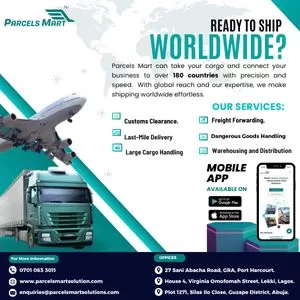How Cross-Border Logistics Is Powering North American Trade in 2025

North American trade is evolving rapidly, with cross-border logistics playing a vital role. At the moment, it’s no secret that businesses face growing demand for efficient transport solutions between the U.S. and Canada.
Advanced systems optimize supply chains to manage challenges like complex regulations and rising costs. Specialized sectors rely heavily on innovative logistics to handle unique loads and deadlines.
New approaches power resilience while improving delivery timelines and maintaining compliance. From tech integrations to niche transportation methods, there’s much driving this dynamic industry forward. Here’s a closer examination of what’s fueling these advancements.
Image Source: Google Gemini
The Role of Tech
Technology transforms how goods move between the U.S. and Canada, tackling key pain points like delays and inefficiency.
Key advancements include:
- Automated customs processes improving clearance times
- AI-driven forecasting for demand and inventory management
- Blockchain networks securing documentation transparency
These technologies simplify regulatory compliance while providing real-time insights. Digital platforms connecting carriers to shippers enhance efficiency further by optimizing routes based on weather or traffic conditions. Meanwhile, IoT-enabled sensors ensure fragile or perishable cargo stays protected throughout transit.
Embracing these innovations leads to faster delivery speeds with fewer errors, which is something all industries can benefit from in today’s fast-paced market environment. Businesses gain an edge by integrating smart logistics into their operations now more than ever.
Specialized Transport Needs for Heavy-Duty Industries
Industries like construction and energy depend on tailored logistics to move heavy or oversized loads across borders. Standard shipping solutions often fall short when handling unique cargo requirements.
Key considerations for these industries include:
- Securing permits for transporting large or hazardous materials
- Utilizing equipment designed specifically for challenging loads
- Ensuring compliance with regulations across multiple jurisdictions
For example, working with a specialist in Quebec equipment shipping to move oversized machinery ensures safe transport while meeting legal standards.
Transporting specialized goods also requires detailed planning around timelines and delivery routes. Companies benefit from partnering with logistics providers who understand these demands deeply, minimizing risks of delays or fines.
Tailored solutions help maintain project schedules while protecting valuable cargo, giving businesses the reliability they need in high-stakes sectors like infrastructure development.
Challenges of Compliance and Customs in North American Trade
Coping with customs regulations between the U.S. and Canada remains one of the most complex aspects of cross-border logistics. Compliance requires precision, expertise, and staying up to date with evolving trade policies.
Common challenges include:
- Ensuring proper documentation for shipments
- Adhering to differing standards across industries
- Avoiding delays caused by regulatory missteps
Shippers often face hurdles like updated tariffs and stricter enforcement protocols, the former of which have hit product pricing on both sides of the border in recent weeks, as well as having an impact on international brands.
Partnering with experienced customs brokers helps businesses mitigate risks while streamlining processes. Tools like automated compliance software reduce human errors in paperwork preparation, ensuring accuracy every time.
Key Innovations Improving Speed and Efficiency in Logistics
The logistics industry thrives on innovation, enabling faster and more efficient cross-border trade between the U.S. and Canada.
Game-changing innovations include:
- AI-powered route optimization cutting travel times
- Real-time tracking systems enhancing shipment visibility
- Autonomous vehicles reducing human intervention
As mentioned, automation now handles repetitive tasks such as scheduling or data entry, freeing up human resources for strategic decision-making.
Meanwhile, cold chain advancements ensure temperature-sensitive goods like pharmaceuticals or food arrive intact by maintaining constant monitoring during transit. Also, digital twins simulate supply chain scenarios to test potential improvements before real-world application. It’s a brave new world for this segment.
The Bottom Line
Cross-border logistics remains a lynchpin part of trade in North America, and is especially important in this time of uncertainty and upheaval.
Innovations, specialized solutions, and streamlined compliance processes empower industries to thrive despite challenges.
Embracing these advancements lets businesses strengthen their supply chains, improve efficiency, and maintain resilience, ensuring success regardless of what happens next.












































